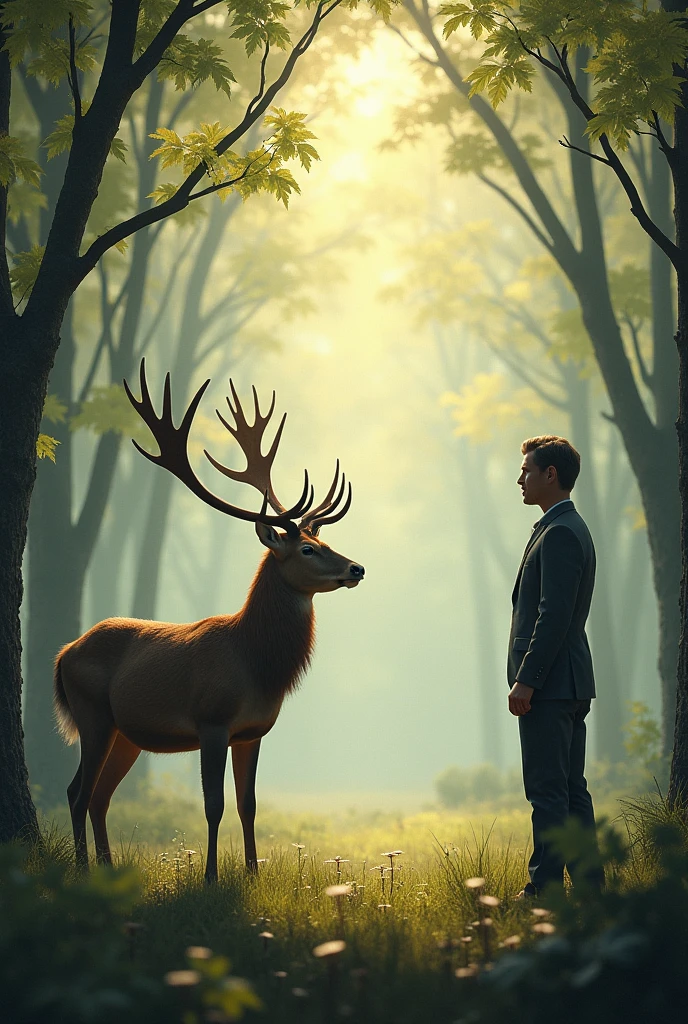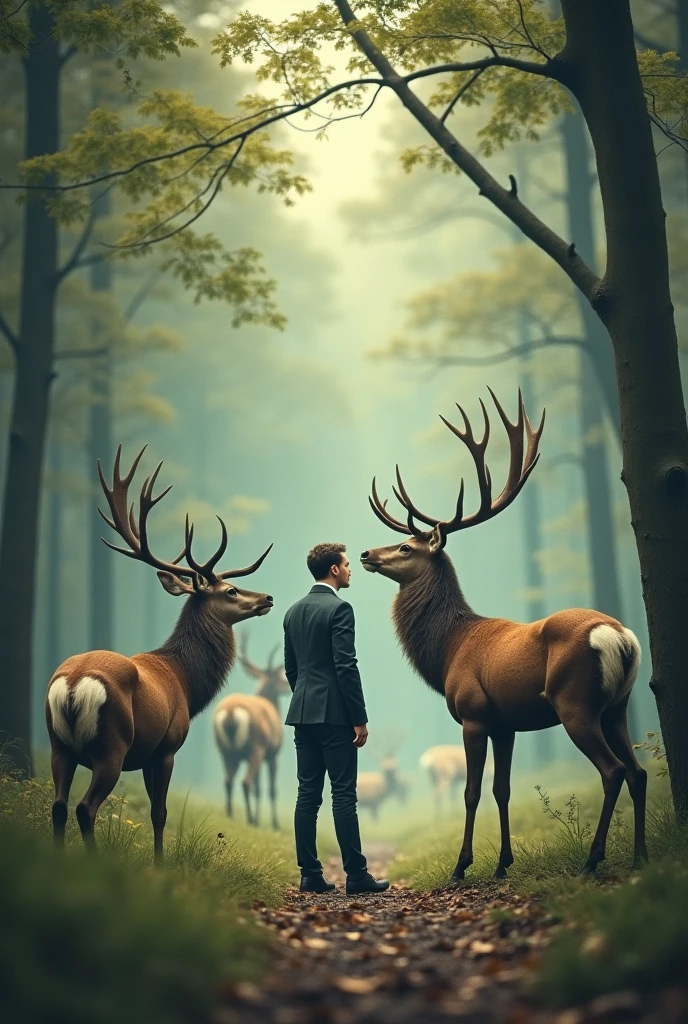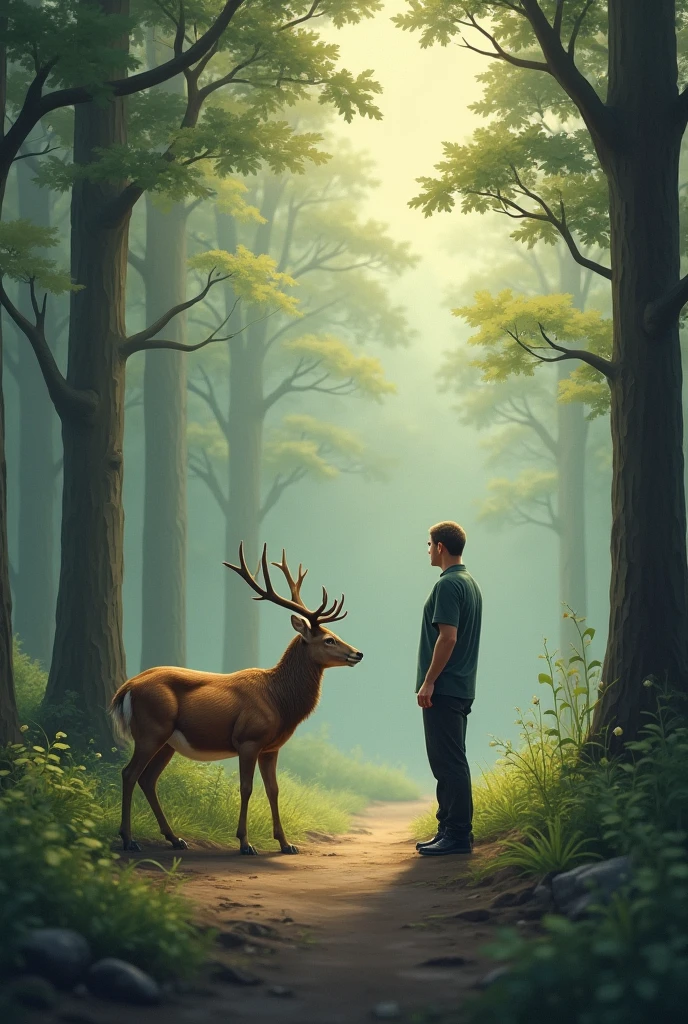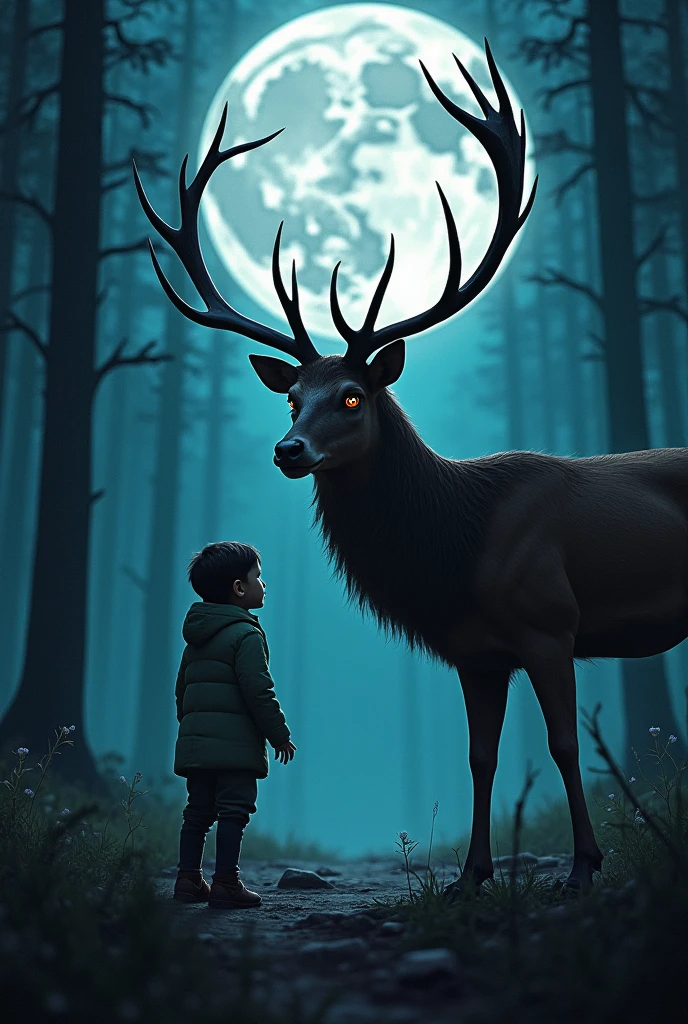When you think of deer, what comes to mind? Most people envision gentle creatures grazing in open fields or darting gracefully through dense forests. But the question that often comes up is: Do deer attack humans? While these animals are often perceived as peaceful symbols of nature, the reality is far more complex.
Deer can and do attack humans in specific situations, and understanding these encounters is crucial for safety. In this comprehensive guide, we dive deep into the surprising truth behind deer attacks, their triggers, and how you can protect yourself in the wild or your backyard.
Here’s a well-structured table summarizing facts and figures about deer and their interactions with humans:
| Category | Fact/Figure |
|---|---|
| Global Deer Population | Estimated at 30 million in the United States alone, with millions more globally. |
| Deer Species | Over 40 species worldwide, including white-tailed deer, mule deer, elk, and moose. |
| Height | Deer range from 2 to 6.5 feet tall at the shoulder, depending on the species. |
| Weight | Varies widely: White-tailed deer weigh 90–300 pounds, while moose can reach 1,500 pounds. |
| Antler Growth | Bucks grow new antlers annually, which can grow up to 1 inch per day during peak seasons. |
| Speed | Deer can run up to 30 miles per hour and leap over 8-foot-high obstacles. |
| Deer Attacks per Year | Estimated at 30–50 incidents in the U.S., most often during mating season or due to provocation. |
| Most Aggressive Species | Moose are considered the most aggressive, especially when protecting calves or during the rut. |
| Common Seasons for Attacks | Fall (rut) and spring (fawning season) are the riskiest times for aggressive deer behavior. |
| Deer-Vehicle Collisions | Approximately 1.5 million accidents occur annually in the U.S., causing 200 human deaths and $1 billion in damages. |
| Diet | Primarily herbivorous, consuming 2–8 pounds of vegetation daily, including grass, twigs, and leaves. |
| Lifespan | Deer live 6–14 years in the wild, depending on species and predation risks. |
| Active Hours | Deer are crepuscular, meaning they are most active at dawn and dusk. |
| Fawn Survival Rate | Only 50% of fawns survive their first year due to predation and environmental factors. |
Understanding Deer: Fascinating Members of the Cervidae Family
Deer belong to the Cervidae family, which includes species such as white-tailed deer, mule deer, elk, and moose. Found across diverse habitats, deer are highly adaptable creatures. However, their graceful appearance can mask their potential for aggression, especially during certain times of the year.

Physical Traits That Make Deer Formidable
Though deer are herbivores, their physical features equip them to defend themselves and their territories effectively:
- Antlers: Male deer, known as bucks, grow antlers annually. These bony structures are used for fighting and intimidation during the rutting season.
- Acute Senses: Deer have sharp hearing, an incredible sense of smell, and excellent low-light vision, making them highly alert to potential threats.
- Speed and Agility: A startled deer can sprint up to 30 miles per hour and leap over obstacles as high as 8 feet, allowing it to escape predators or confront intruders.
| Physical Trait | Purpose |
|---|---|
| Antlers | Used for dominance battles and defense during mating season. |
| Acute Senses | Enable early detection of threats. |
| Speed and Agility | Allow quick escape or tactical defense when cornered. |
Behavior and Social Structures of Deer
Deer behavior is shaped by their environment, survival instincts, and social dynamics. These behaviors often dictate their interactions with humans.
Crepuscular Activity
Deer are most active during dawn and dusk—a pattern known as crepuscular behavior. These times coincide with peak human activity during outdoor activities like hiking or driving, increasing the likelihood of encounters.
Social Organization
- Bucks: Generally solitary except during mating season. Mature bucks are territorial and prone to aggression.
- Does: Female deer often stay in groups with their fawns, particularly during fawning season.
- Fawns: Young deer are highly vulnerable and often left hidden by their mothers while they forage nearby.
Deer and Human Interaction
With human expansion into natural habitats, encounters with deer are more common. Whether you’re hiking in the woods or gardening in a suburban backyard, understanding deer behavior is critical to avoiding conflict.
When and Why Do Deer Attack Humans?
Deer attacks on humans are relatively rare but can occur under specific circumstances. Typically, these incidents result from instinctive responses rather than outright aggression. Let’s explore the primary triggers.
1. Mating Season (The Rut)
The rut, occurring in fall, is when bucks compete for mating rights. During this time:
- Testosterone Levels Surge: Bucks become highly aggressive and territorial.
- Challenges Are Misinterpreted: A buck may perceive a human’s presence as a rival or threat.
Interesting Fact: Bucks frequently lock antlers in battles for dominance during the rut. These fights can last several minutes and sometimes lead to injuries or even death among deer.
2. Protecting Fawns (Fawning Season)
Spring marks fawning season, when does give birth to their young. Female deer become extremely protective and may react aggressively to any perceived threat near their fawns.
Key Tip: If you see a fawn alone, resist the urge to approach. The mother is almost always nearby and will return once the area is safe.
3. Feeling Cornered or Threatened
Deer prefer to flee when faced with danger. However, if escape routes are blocked or they feel cornered, they may switch to defensive aggression. Common scenarios include:
- Approaching too closely while hiking or camping.
- Startling a deer unexpectedly.
- Encountering deer during crepuscular hours when visibility is low.
4. Human Provocation
While most deer-human encounters are accidental, certain human actions can provoke deer aggression:
- Feeding Deer: Encouraging deer to approach humans can make them less wary and more likely to defend their space.
- Approaching Fawns: Many people mistakenly believe fawns are abandoned and try to “rescue” them. This behavior can trigger a mother’s protective instincts.

Signs of Aggressive Deer Behavior
Recognizing the warning signs of aggression can help you avoid a dangerous situation. Deer often display specific behaviors before attacking:
- Rigid Posture: The deer stands stiffly, indicating it feels threatened.
- Stomping Hooves: A clear warning to back off.
- Flattened Ears: A sign of irritation or aggression.
- Intense Stare: The deer locks its gaze on you as it assesses the threat.
- Lowered Head with Antlers: Bucks preparing to charge will lower their heads and present their antlers.
| Sign | What It Indicates |
|---|---|
| Rigid Posture | The deer is assessing a potential threat. |
| Stomping Hooves | A warning to maintain distance. |
| Lowered Head with Antlers | Imminent charge or attack by a buck. |
How to Avoid Deer Attacks
By understanding deer behavior and taking proactive measures, you can reduce your risk of encountering an aggressive deer.
General Safety Tips
- Keep Your Distance: Maintain at least 50 yards of space between you and the deer.
- Avoid Feeding Deer: Feeding encourages close interactions, which can escalate into aggression.
- Respect Seasons: Be extra cautious during rut (fall) and fawning season (spring).
Safety Tips for Outdoor Activities
If you’re hiking, camping, or engaging in other outdoor activities:
- Stick to Trails: Avoid wandering into deer habitats.
- Make Noise: Deer rely on acute hearing; loud sounds can help them avoid you.
- Avoid Sudden Movements: Sudden actions can startle deer and provoke aggression.
Home Safety Measures
Deer often wander into residential areas, especially in search of food. Protect your property with these precautions:
- Install Deer-Proof Fencing: Ensure fences are at least 8 feet high to prevent deer from jumping over.
- Use Motion-Activated Devices: Lights or sprinklers can deter deer from entering your yard.
- Apply Repellents: Spray natural or chemical repellents on plants to keep deer away.
What to Do If a Deer Attacks
Despite your best efforts, a deer attack can still happen. Knowing how to respond can make all the difference.
Immediate Actions
- Stay Calm: Avoid panicking, which can escalate the situation.
- Back Away Slowly: Do not turn your back or run, as this can trigger a chase response.
- Protect Yourself: Use objects like a backpack or jacket as a shield.
Defensive Tactics
- Appear Larger: Raise your arms or use a jacket to make yourself look intimidating.
- Curl Into a Ball: If knocked down, protect your head, neck, and torso.
Seek Medical Attention
Even minor injuries from a deer attack can lead to infections. Always:
- Clean Wounds Immediately: Use soap and water to prevent bacterial infections.
- Consult a Doctor: Seek professional care for deeper wounds or punctures.

FAQs
Do deer ever attack humans?
While deer are usually peaceful, they can become aggressive, especially during mating season or when they feel threatened, leading to occasional attacks.
Why is a deer chasing me?
Young male deer, especially during the shedding of their velvet antlers, may chase other deer or even humans due to their natural behaviors, unrelated to mating season.
Do deer feel pain like we do?
Deer, like other mammals, experience pain similarly to humans, which raises ethical considerations for hunters and animal welfare.
What to do if a deer tries to attack you?
If confronted by a deer, remain calm, avoid eye contact, and slowly back away without sudden movements to de-escalate the situation.
Are deer intelligent?
Deer are quite intelligent, capable of differentiating between various calls, assessing risks, and even showing distinct personalities.
Will a deer attack a dog?
Deer may attack dogs if they feel their young are threatened or if they are startled, especially if the dog shows a high prey drive.
How aggressive are deer?
While typically non-aggressive, female deer can become defensive when protecting their fawns, and males may become territorial during mating season.
When a deer blows at you?
A deer blowing typically signals alarm, and if it occurs, the hunt is likely over, as the deer will often flee to avoid danger.
What do deer see when they look at you?
Deer are red-green colorblind, so they perceive shorter wavelengths like blue and green but have difficulty seeing reds and oranges.
Can a deer cry?
Baby deer may cry when orphaned, especially due to hunger or distress, often seeking help from humans or predators.
How do deer react to humans?
Deer tend to avoid humans but may become aggressive during mating season or if they feel cornered or threatened.
Do deer scream when attacked?
Though rare, deer can emit loud, terrifying screams when injured or in extreme distress, a sound that haunts those who hear it.
Are deer scared of humans?
Deer are generally fearful of humans, often seeing them as a greater threat than their natural predators, especially in areas with human activity.
How do you escape a deer attack?
To escape a deer attack, make yourself appear larger, use loud noises, and back away slowly, never turning your back on the animal.
Why do deer stare at humans?
Deer may stare at humans, especially in the presence of dogs, as they assess potential threats, often out of curiosity or caution.
Can deer remember faces?
Studies have shown that deer can recognize and remember human faces, an important factor in their ability to avoid potential dangers.
Will deer attack humans?
Deer are typically peaceful but can attack in certain situations, such as when they lose their natural fear of humans in suburban areas or during mating season.
Can deer get angry?
Deer show signs of anger through body language, such as raising the hair on their necks, turning their head, and displaying aggressive behaviors when threatened.
How to tell if a deer is going to attack?
Signs of aggression in deer include head bobbing, tail raising, stomping, and snorting, all indicating they may feel threatened or dominant.
Are deer peaceful?
Deer are generally peaceful animals known for their grace and agility, capable of running at high speeds and swimming to avoid predators.
How rare is it to hit a deer?
In the U.S., drivers have a 1 in 128 chance of colliding with a deer, particularly during the months of October through December.

Conclusion
While deer attacks on humans are rare, they are not unheard of. Understanding deer behavior, recognizing aggression signs, and taking preventive measures can significantly reduce your risk of a dangerous encounter. Whether you’re hiking through a forest or enjoying your backyard, respecting wildlife and maintaining a safe distance is the key to coexistence.
Let us know your thoughts or share your wildlife encounters in the comments below!
Read more knowledgeable blogs on Flowy Magazine

James Clair is a passionate writer and researcher with a deep fascination for animal behavior and its intricate connection to human life. With a background in [relevant field of study, e.g., zoology, psychology, ethology], James has spent years studying the natural world, focusing on how animals’ actions and instincts impact human emotions, behavior, and society.
His expertise in [specific topics or regions of focus, e.g., canine psychology, animal communication, wildlife conservation] has led to numerous published works and collaborations with renowned researchers and institutions. Through his work at Flawy Magazine, James aims to bridge the gap between scientific research and public understanding, offering insightful, accessible articles that explore the complex relationship between humans and animals.
When he’s not writing, James enjoys [personal hobbies or interests, e.g., hiking in nature, volunteering at animal shelters, photography] and is an advocate for [cause or charity related to animals or conservation]. His mission is to inspire readers to see animals not just as companions or creatures of the wild, but as beings whose behavior holds valuable lessons for us all.









